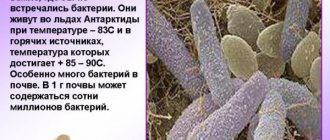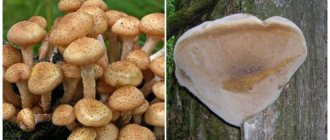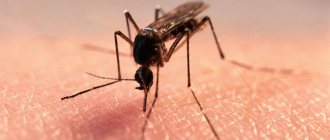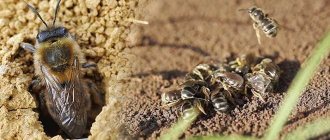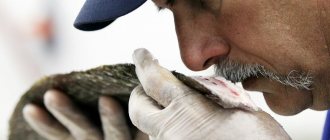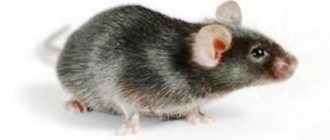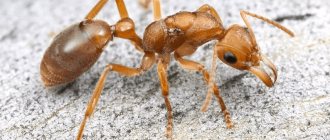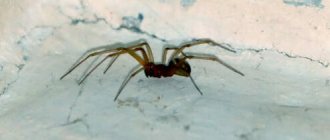Saprotrophs (Ancient Greek σαπρός - “rot” and τροφή - “food”) are organisms that feed on the dead remains of other creatures or animal feces, known as detritus. Saprotrophic organisms are decomposers that are considered critical to the process of decomposition and nutrient circulation in an ecosystem.
Saprotrophs include fungi, bacteria, oomycetes, as well as saprophytes (parasitic flowering plants and some algae) and saprophages (death beetles, skin beetles, dung beetles, earthworms, nematodes, mites, fly larvae, woodlice, protozoa, benthic amphipods, crayfish , vultures, crows, hyenas and many other animals).
Ecological niches
Saprophytic bacteria are one of the most numerous groups of microorganisms. If we talk about the place of saprotrophs in ecological systems, they always displace heterotrophs. Heterotrophs are organisms that cannot produce organic compounds themselves, but are only engaged in processing existing material.
The group of saprotrophs includes representatives of many families and genera of bacteria:
- Pseudomonas aeruginosa (Pseudomonas);
- Escherichia coli (Proteus, Escherichia);
- Morganella;
- Klebsiella;
- Bacillus;
- Clostridia (Clostridium) and many others.
Saprotrophs inhabit all environments in which organic matter is present: multicellular organisms (plants and animals), soils, they are found in dust and in all types of bodies of water (except hot springs).
The result of the action of saprophytic organisms, obvious to humans, is the formation of rot - this is what the process of their feeding looks like. It is the rotting of organic material that is evidence that saprotrophs have taken over.
During the process of decay, nitrogen is released from organic compounds and returned to the soil. The reactions are accompanied by a characteristic hydrogen sulfide or ammonia odor. By this smell one can identify the beginning of the putrefactive decomposition process of a dead organism or its tissues.
Mineralization of organic nitrogen (ammonification) and its transformation into inorganic compounds - such a key role in nature is assigned to saprophytic organisms.
This is interesting: Economic activities of people - types, examples and role
Varieties of mycorrhiza
In recent years, 3 types of special preparations with the same name have been developed for gardening - “Mycorrhiza” or “Mycoplant”, containing spores and mycelium of fungi useful for the growth of various plants. This:
- ENDO-MYCORRHIZA. Hyphae - threads of mycelium, penetrate into the internal parts of the roots of fruit trees, berry bushes, vegetables, garden herbs, cereals, entering into a symbiotic relationship with them. This drug is also necessary for a number of indoor plants, primarily ornamental and exotic. For example, frequent flowering of orchids and active fruiting of citrus fruits in pots cannot be achieved without the support of mycorrhiza, with which they are friends in nature.
- ECTO-MYCORRHIZA. Mycelial hyphae envelop the roots from the outside, forming a symbiosis with forest coniferous and deciduous crops. They create natural soil conditions for them. As a result, care for spruce, pine, juniper, thuja, oak, maple and other “wild” trees is reduced to a minimum.
- ENDO/ECTO MYCORRHIZA. In fact, this drug is characterized as “2 in 1 bottle”. It is used in areas where there are joint plantings of “wild” and “domestic” crops. For example, ectomycorrhizal hazel - hazelnut shrub and lawn, endomycorrhizal, grass.
Physiological processes
Saprotrophs, as one of the most numerous groups, have in their ranks representatives with very different physiological needs:
- Anaerobes. For example, we can consider E. coli, which carries out its life processes without the participation of oxygen, although it can live in an oxygen environment.
- Aerobes are bacteria involved in the decomposition of organic matter in the presence of oxygen. Thus, putrefactive diplococci and three-membered bacteria are present in fresh meat. At the initial stage, the content of ammonia (a waste product of putrefactive microflora) in meat does not exceed 0.14%, and in already rotten meat – 2% or more.
- An example of spore-forming bacteria is Clostridia.
- Non-spore-forming bacteria are Escherichia coli and Pseudomonas aeruginosa.
Despite the diversity of physiological groups, united according to the characteristics of saprophyte, the final products of the activity of these bacteria have almost the same composition:
- cadaveric poisons (biogenic amines with a strong unpleasant cadaveric odor; as such, the toxicity of these compounds is low);
- aromatic compounds such as skatole and indole;
- hydrogen sulfide, thiols, dimethyl sulfoxide, etc.
Of all the listed decay products, the most dangerous and toxic to humans are the latter (hydrogen sulfide, thiols and dimethyl sulfoxide). They cause severe poisoning, even death.
Mushrooms as modern bio-plant protection products
The mycelium of a number of fungi is a highly effective bio-protection of plants.
- Metarhizium anisopliae is a species of entomopathogenic fungi from the family Clavicipitaceae, which can have a long-term beneficial effect on the soil, preventing the proliferation of insects harmful to plants: beetles, mole crickets, Colorado potato beetles, and wireworms. Having taken root in the soil during the autumn rainy season, the developed mycelium is capable of disinfecting the soil of their larvae in the spring.
- Avermectins are waste products of soil fungi Streptomyces avermitilis that irreversibly damage the nervous system of codling moths, cabbage whites, aphids, weevils, apple moths, etc.
- The hyphae of the fungus Arthrobotrys superba have sticky 3D lasso traps for hunting plant-parasitic nematode worms.
- The mycelium of the fungus Beauveria bassiana, germinating into the bodies of insects, infects them with its spores with a neurotoxic effect. Pests do not die immediately. Having become carriers of pathogenic spores for some time, they manage to infect many of their relatives.
- The metabolic products of the Trichoderma fungus are an effective remedy for late blight, powdery mildew, gray rot, and other diseases of leaves and fruits.
- The preparation with spores and mycelium of Verticillium lecanii is successfully used to protect greenhouse plants from aphids and greenhouse whitefly.
Interaction
Saprotrophic bacteria are an essential part of any microbial community, which includes parasitic microorganisms, lactic acid fermenters, and in some cases fungi.
For example, we can consider the human intestinal microflora. Healthy microflora, which ensures normal food processing, consists mainly of lactic acid bacteria. They create an environment in the intestine that inhibits the saprotrophs and parasites present.
But as soon as the required amount of lactic acid ceases to be produced in the intestines, favorable conditions appear for the nutrition, growth and reproduction of putrefactive microflora, which immediately begins to poison a person with the products of their vital activity, which entails severe damage.
Physiology of fungi
Two groups can be distinguished:
- Fungi choose living plants or producers for their existence. These fungi feed on living plant cells. They do not grow on artificial soil.
- Fungi live on plant remains or decaying organic matter. But there are few such representatives; basically, these organisms can move from one phase to another.
Thus, autumn honey fungus is a saprophyte and develops on dead stumps. It happens that it grows on living trees, and in such conditions it becomes a parasite. But parasitic tinder fungi, living on living plants, are occasionally found on dead parts of the tree. There are known cases where fungi at different stages can behave both as saprophytes and as parasites. And even a typical parasite can be grown in an artificial nutrient soil called agar.
Wood rotting
The processing of dead wood and the return of the inorganic compounds of which it consisted to the soil is also carried out with the participation of saprotrophic bacteria. But if they play a key role in the decomposition of animal organic matter, then wood is mainly decomposed by fungi.
Putrefactive processes in wood are not caused by mold fungi. Infection of wood by mold fungi has little effect on the integrity of the wood fibers and the overall appearance of the wood. Damage caused to wood by mold can be easily removed.
The real enemy of wood is the destructive house fungus. This microorganism (eukaryote) turns wood into dust, unsuitable for further use. The presence of real house fungus in the tissues of the tree reduces the quality of the wood several times. Such material is no longer used to produce reliable and beautiful wood products.
Saprotrophs (both bacteria and fungi) feed on those objects that have a certain material value for humans. In fact, they spoil human health, their homes, food, clothing and crops. But nature cannot do without this very important group of the bacterial community. That is why a person needs to look for a way not how to destroy saprotrophs, but how to protect himself from the products of their vital activity.
I work as a veterinary doctor. I am interested in ballroom dancing, sports and yoga. I prioritize personal development and mastering spiritual practices. Favorite topics: veterinary medicine, biology, construction, repairs, travel. Taboos: law, politics, IT technologies and computer games.
Parasitic bacteria
Parasites are bacteria that settle on (or in) living organisms and feed on their substances. Among them there are many pathogens that cause diseases such as typhoid, cholera, diphtheria, etc.
A large group consists of parasitic bacteria. They feed on organic matter from living organisms. An example of parasites is pathogenic bacteria.
All pathogenic bacteria (parasites) live off the nutrients of other organisms in whose bodies they live. Like protozoa, bacteria have a preference for certain tissues and organs. They take root there and cause damage to these tissues and organs.
Related pathogens include salmonellosis (causative agent Salmonella) and typhoid fever. All of them are called “diseases of dirty hands,” but they can also be contracted through flies, contaminated food and water. Many bacteria infect the respiratory tract, causing a person to develop a sore throat.
Various forms of pneumonia caused by pneumococci are widespread. Mycobacterium - Koch's bacillus - causes tuberculosis, a disease that inspired horror at the beginning of the twentieth century. Usually the lungs are affected (“consumption”), but now other forms of the disease are also common, which are quite difficult for primary diagnosis (bone, renal tuberculosis - note biofile.ru).
Bacteria are parasites. Measures to combat pathogens of infectious diseases include: carrying out preventive vaccinations, monitoring water sources and food products, pasteurization and heat treatment of food, compliance with basic hygiene requirements, disinfection of premises, sterilization of instruments and dressings.
Plague, or pestilence, is the name given to one of the most serious diseases. Plague is caused by pathogenic bacteria - plague bacilli. If a disease is transmitted from one person to another and many people become ill, an epidemic breaks out. The devastating plague epidemics in ancient times were the most terrible disaster. Originating in the East, the plague spread to Central Europe in the 6th century. Raging there for about eighty years, the disease exterminated thousands of people a day in large cities.
The history of human society knows many epidemics like the plague epidemic in the 6th century. Pathogenic bacteria have adapted to life in the living human body. Having penetrated inside, they feed, multiply quickly and poison the body. This sometimes causes serious illness.
Bacteria are parasites. Infectious diseases are also spread through various objects. So, in 1913, merchants bought at a cheap price the skins of livestock that had died from an infectious disease - anthrax. These skins were used to make sheepskin coats for soldiers. As a result, not only the people who tanned the skins, but also some soldiers became infected and died from anthrax.
In areas where livestock suffer from tuberculosis, the causative agents of this disease enter the human body along with raw milk. Infectious diseases are also transmitted through tiny splashes of saliva when a patient talks, coughs or sneezes.
Patients are given various medications that kill pathogenic bacteria. To destroy bacteria in the room where an infectious patient was located, disinfection is carried out, that is, spraying or fumigation with chemicals that cause the death of bacteria. Preventative vaccinations are used to prevent infectious diseases.
Bacteria are present in huge numbers in the human intestine (up to a thousand species with a total mass of about 1 kg). As a rule, they are safe for human health, and are also involved in the digestion of carbohydrates, the synthesis of vitamins, and the fight against pathogenic bacteria. They form the “correct” microflora in the intestines, which participates in the normal digestion process and protects the body from infections.
Bacterial cells have different shapes: single-celled spherical - cocci, straight rod-shaped - bacilli, comma-shaped - vibrios, spiral - spirilla.
Single bacteria were called - monococci (in Greek "monos" - one and "coccus" - ball), connected in pairs - diplococci (in Greek "diplos" - double), tetracocci (from the Greek "tetra" - four), twisted bacteria - spirochetes (from the Latin "spira" and the Greek "chaeta" - bristle). in the form of a bunch - staphylococci (in Greek "staphylos" - a bunch of grapes).
There are many bacteria that, when the human body’s immune defenses are weakened, can cause pathologies.
Here are the most well-known pathogenic bacteria:
- Staphylococcus aureus - can cause purulent inflammatory processes in humans in almost all organs and tissues of the body - from mild skin infections (acne, boils, carbuncles) to extremely severe ones that are life-threatening (osteomyelitis, meningitis, sepsis, etc.).
- Streptococcus lives primarily in the digestive (oral cavity, colon) and respiratory (nasal cavity) organs of humans. It provokes a sore throat, bronchitis, lymphadenitis, pneumonia, meningitis, acute rheumatic fever, abscess and other diseases that occur with high body temperature and general intoxication of the body.
- Shigella - causes bacterial dysentery (shigellosis), which manifests itself in the form of: diarrhea, lesions of the colon mucosa, general intoxication of the body.
Main groups of saprotrophs
Mushrooms
Of all the saprotrophs, fungi are among the most efficient at breaking down complex organic molecules and recycling these nutrients back into the ecosystem. Fungi are the main decomposers of plant matter, which makes up the vast majority of detritus on Earth.
The bulk of plant tissue is made up of a complex carbohydrate called cellulose. Cellulose is made up of many glucose molecules arranged in such a way that most organisms are unable to efficiently metabolize the compound. Fungi, however, have evolved a set of enzymes that allow them to digest complex structures, converting fiber into simple carbohydrates. This ability plays a critical role in the carbon cycle, allowing the release of carbon dioxide from decaying organisms, and converting plant tissue into substances that both fungi and other living things can use for nutrition.
Fungi that decompose leaves and twigs on the forest floor include mushrooms of the genus Marasmius and many familiar garden or forest species. Fungi such as Pilobolus feed primarily on the excrement of herbivores. Wood-decaying fungal species, including Trametes, Pleurotus, and Ganoderma, can have negative economic impacts on the forest industry by decomposing both cut wood and dead bark from living trees. Damage to people's homes is caused by the real house mushroom, or weeping serpula (Serpula lacrymans).
Bacteria
Escherichia coli Bacteria are
well known decomposers of dead animal flesh and are effective at converting animal tissue into simpler forms of organic compounds. A number of saprotrophic bacteria, including E. coli, are associated with diseases of the digestive system, since meat and other foods are also their source of nutrition in nature.
Some bacteria, such as Spirochaeta cytophaga, have the ability to degrade cellulose. Symbiotic cellulose-decomposing bacteria are found in the rumen of cows and aid in animal digestion through the fermentation of cellulose in grass. Like fungi, these organisms also have the ability to partially break down cellulose into intermediate molecules and facilitate its decomposition process.
Oomycetes
Insect larva (mayfly) infected with an oomycete. Photo: TheAlphaWolf / Wikimedia Commons
Oomycetes are a clade of mycelial organisms distributed in freshwater and marine habitats throughout the world. Some species, especially those from the order Saprolegniales, are saprotrophs and decompose both plant and animal material. These organisms are considered to be among the most important decomposers in freshwater ecosystems.
Didn't find what you were looking for? Use the site search form
Did you like the article? Leave a comment and share with your friends
This is interesting: Land resources of the Earth
Variety of symbiont mushrooms
Many edible and poisonous organisms known to man are symbionts:
- white (boletus);
- boletus;
- fox;
- oiler;
- saffron milk cap;
- boletus
Among the poisonous organisms, symbionts are the following:
- toadstools (white, pale, spring);
- fly agaric (red, toadstool, panther);
Such fungi are not able to exist without host plants, because from them they receive all the organic compounds they need, which plants form during photosynthesis.
Features of the symbiont organism
Fly agarics are found in all forests
A feature of such organisms is a kind of selectivity. An example of this is the well-known boletus, which is not able to grow in alder or aspen forests. The common fly agaric forms a mycelium that does not require a specific host, so it is found in any forest. But saffron milk caps and boletus are attached only to coniferous trees.
The ideal symbiont
Cenococcum is one of the most common and at the same time little studied fungi that form mycorrhiza. It is found both in the Arctic and in tropical latitudes. It is most often found in the roots of plants that can survive in extreme conditions. It forms ectomycorrhiza with a huge number of gymnosperms and angiosperms, as well as some ferns.
Research has revealed that this representative of the fungal kingdom produces few enzymes that destroy plant tissue. These enzymes are found mainly in common fungi that decompose organic matter for specific purposes. Coenococcum actively forms proteins that are integrated into the cells of the host plant and pump water there. Since this type of protein is activated during drought, it is not surprising that trees form a symbiosis with this particular organism - it helps them obtain water at a time when it is extremely scarce.
Symbiont mushrooms
Symbiosis is the cohabitation of different organisms in which both benefit. Symbiont fungi participate in the formation of two symbioses:
- lichens formed as a result of interaction with algae and bacteria;
- mycorrhiza - with the root system of plants.
Nutritional Features
Mushrooms, entwining the small roots of plant organisms, feed on the organic substances that make up their composition. Such actions do not harm plants, but promote the absorption of nutrients (nitrogen, phosphorus, microelements) and water from the soil.
Names and descriptions of popular symbiont mushrooms
Typically, cap mushrooms are classified as a mixed type of nutrition, which can receive organic substances from both plant roots and humus.
- Boletus. Interacts with aspens, oaks, willows and poplars. The brown hemisphere-shaped cap has a reddish or orange tint. It is impossible to separate the layer of skin without pulp. The height of the gray leg is up to 18 cm. The fruit body is fleshy and dense. Young individuals are elastic, while old ones become loose. At the break, the white flesh turns blue over time and then turns black. Does not have a pronounced aroma.
- Boletus. Grows near birch roots. Over the course of its life, the mushroom cap changes from a spherical shape to a flat, pillow-like shape. At high humidity it becomes sticky to the touch. The white pulp with a dense structure oxidizes at the cut site. In older individuals it becomes watery and loose. Cylindrical leg covered with dark gray scales.
- Oiler and saffron milk cap. They live under coniferous trees. Butterflies are characterized by a slimy skin that appears to be coated with oil. Hemisphere-shaped hats reaching 16 cm in diameter are painted in a spectrum of colors from brown-chocolate to yellow-brown. As they grow older, the shape straightens out, becoming flat. The color of the stem is usually lighter. The pulp is juicy. The saffron milk cap is characterized by a round cap with concentric circles and a depressed center. The orange pulp oxidizes when it comes into contact with air, acquiring a greenish tint.
If you destroy the host tree, the mushrooms growing underneath will also disappear.
Interesting facts about symbiont mushrooms
A characteristic feature of the fungi that form mycorrhiza is that they cannot be grown under artificial conditions. Their mycelium is capable of being in the soil, absorbing and transferring nutrients, but will not form fruiting bodies. Without a certain type of tree, such mushrooms do not bear fruit.
The host plant will grow poorly, develop slowly, and eventually die if there is no symbiont fungus in the soil nearby. An example of this is pine seedlings, which grow much faster if spores of a certain type of fungus get into the soil.
Sometimes a symbiosis occurs between mushrooms and ants. Insects feed on nutritious hyphae, creating entire “mushroom farms” underground. This is beneficial for mushrooms, because ants generously fertilize the soil.
Saprophytic mushrooms
Saprotrophic organisms (decomposers, saprophytes) feed on organic compounds obtained as a result of the destruction of dead animals and plants.
Features of structure and nutrition
Saprophytes include many large fungi, consisting of a large number of light spores, allowing them to spread effortlessly to other food sources.
This population of fungi prefers to settle on plant debris:
- fallen needles, foliage;
- feathers and horns;
- twigs;
- cones;
- stems of annual grasses;
- tree stumps
Saprophytes extract nutrients from dead sources. Depending on the substrate, certain types of mushrooms grow.
Examples of saprophyte fungi
Since all living organisms have a beginning and an end, saprophytes play an important role in the cycle of substances, destroying natural biomass consisting of monoorganic substances. Edible mushrooms include:
- morels;
- dung beetles;
- Champignon;
- umbrellas.
Among saprotrophic organisms there are also unsuitable for food, which pose a danger to human life.
Mycorrhizal relationships between fungi and plants
More than 80% of all land plants have mycorrhizal relationships with the mycelium of various fungal species. Thanks to this, the root contact of plant crops with the soil increases almost a thousand times. The mycelium supplies the roots of the plant with water, minerals and trace elements extracted from the soil, receiving in return the sugar compounds necessary for its growth.
In addition to the synthesis and supply of substances beneficial to plants, it can also be said to “intelligently” monitor their correct dosage. As a result, the protected crops develop better, they have more flowers and ovaries, resistance to diseases and higher yields. The tolerance to unfavorable changes in weather such as prolonged rains or drought also increases. There are plants that cannot even exist without mushrooms.
Mushrooms are parasites
Unlike fungi, which perform useful activities, parasitic organisms do not benefit the host plant, but destroy it during their lifetime. Tree infection occurs through damaged bark. Fungal spores, transported by air flow, penetrate through bare areas and settle on wood.
To avoid infection of fruit trees, it is necessary to take preventive measures in a timely manner: watering in the summer months, shelter for the winter, isolating wounds with garden varnish. If a parasitic growth appears on the trunk, it is recommended to destroy the tree, preferably burn it.
Appearance and nutrition
Parasitic fungi are either annuals or perennials that can live up to 25 years. Different species of individuals differ from each other in color, shape, structure, size and life expectancy. The shape of the fruiting bodies is hemispherical or cap-shaped , and also similar to a hoof or the tip of a pike. There are also shapeless growths in the form of convex or layered bodies. Perennials are capable of gaining up to 10 kg of weight and growing to a size of one meter. The color spectrum of parasites is also diverse. The structure of the body is similar to wood or soft skin.
When settling on living plants, fungi feed on organic substances from living cells of the host. As a result, the tree suffers enormous damage. Having settled on agricultural crops, they lead to the formation of dangerous diseases and reduce yields.
Some parasites are able to adapt well to the host, stimulating its development in the initial stage. They feed on the growths formed, without developing mycelium inside the tree.
Edible types of parasitic mushrooms
Cap mushrooms are usually classified as saprotrophs. Less common are parasites, such as honey fungus. Entering into symbiosis with the root system, the fungi penetrate it with mycorrhizae, entwining the root processes.
The presence of a ring on the stem of the honey fungus formed the name of the mushroom. Prefers to grow in large colonies. It is salted, fried, pickled. Valued for its high mineral content. Just 100 grams of product contains the body’s daily need for these elements.
Since honey mushrooms cause wood rot, they are dangerous parasites. The black laces of the mycelium penetrate the bark and, releasing toxic substances, affect the wood. As a result, a young tree may die within 1-3 years. The old specimen dies after 10 years. Once a fungus settles on a tree, its growth slows down. The protective substances that the tree produces cannot stop the process, but only slow it down.
A parasitic fungus that feeds on tree sap is the tinder fungus. There are several varieties of this population. Although there are very few poisonous representatives, they are mainly used in cooking due to their solid body. Some species are considered delicacies. The sulfur-yellow tinder fungus tastes like chicken meat. In some countries, tinder fungi are specially cultivated on farms.
Young specimens of polypores collected on deciduous trees should be eaten. Individuals growing on coniferous trees are at risk of mild poisoning. Experienced mushroom pickers recommend eating only well-known mushroom populations.
What is the difference between saprophytes, symbionts and parasites
There are parasitic, saprophytic and symbiont fungi. The difference lies in the way of eating.
Saprophytes
They prefer substances from dead organisms as a source of food. These are bacteria such as E. coli or certain types of fungi - penicillium. Saprophytes or saprotrophs are a kind of orderlies in nature, because their main function is to process waste.
Symbionts
These are organisms that enter into symbiosis with other species and receive mutual or unilateral benefits from this. Not only aquatic, but also land organisms participate in such relationships. Symbionts create beneficial relationships with each other, with fungi, bacteria and multicellular organisms. But the number of algae susceptible to symbiosis is small.
Parasites
They exist at the expense of living organisms, feeding on their living flesh. Parasites spend almost their entire life in the host’s body. They not only reduce the amount of nutrients, but also poison the carrier organism (host).
It is interesting that pathogenic fungi also lead a saprophytic and parasitic lifestyle. These microorganisms of diverse origin live in different places and conditions. Such organisms play an important role in science, so they are specially grown in an artificial environment for study. The following types of environment are distinguished:
- Non-selective: the most popular type for is Sabouraud agar. It is high in carbohydrates. Often the environment is modified by adding antibiotics, cycloheximide or chlorhexidine. And also to isolate fastidious pathogens, the medium is enriched with 5–10% CA, adding heart and brain extract.
- Selective: such a medium is prepared from a non-selective substrate by adding penicillin, streptomycin and chloramphenicol.
Reproduction
This parasitic fungus can reproduce both asexually and sexually. This fact makes it very tenacious, quickly spreading in nature and dangerous.
How does it reproduce?
In primarily asexual reproduction, mucor reproduces through spores. Threads emerge from the mycelium, which at the end have black heads with seeds. When the spores ripen, the head bursts under the influence of dampness and heat and they are carried by the wind over long distances throughout the area. If conditions are favorable, mold attaches and germinates, forming a mycelium.
During sexual reproduction, two branches of mycelia merge and form a diploid zygote. In humid and warm conditions it germinates into a hypha. The sporangium is born on the hypha.
The benefits of symbiosis
Mycorrhiza is a means of communication between plants. When something that can harm the plant appears in the environment, the mycelium, through chemical compounds, “sends” information about this to other mushrooms, and they meet the pest already prepared. In some ways, this is reminiscent of the transmission of information through the human nervous system. Any forest is a giant information network.
The benefits of symbiosis are as follows:
- Symbiosis helps by increasing the adaptation (especially to unfavorable conditions) of the organism to the environment.
- With its help it will be possible to increase the yield of cultivated plants.
- Thanks to symbiosis, new groups of organisms (for example, lichens) can form.
Types of mushrooms
Saprotrophs are usually divided into several groups, the main of which are xylotrophs (woody), aquatic, humic, soil and coprotrophs (dung). They differ in the way they feed. For example, there are sugar mushrooms that use organic acids, alcohols and simple carbohydrates. Others develop on substrates containing chitin, proteins and cellulose. For this reason, during the entire process of decay of plant remains, one can observe the replacement of some species by others.
There are also keratinophils among saprotrophs, which decompose keratin, which is a very stable protein. It is found in hair, hooves, bird feathers, horns, etc. The nutrition of keratinophils is quite specific, inaccessible to other organisms. They grow slower than others. Examples of saprotrophic mushrooms include the following:
- lamellar;
- marsupials;
- tubular;
- mold;
- yeast.
The first three types are called superior, and the last two are called imperfect.
The first look like ordinary mushrooms, consisting of hyphae and having several nuclei. They form a false tissue, which is divided into a cap and a stalk. But it is known that their presence among satroprophs is not necessary; they may be absent or not have clear boundaries. Their flesh is watery. It protects them from external irritants. The mycelium of such formations is voluminous, containing many thin branches. The color varies, but mostly yellow, white, red-brown and beige.
Marsupial, lamellar and tubular saprotrophs are suitable for human consumption, but yeast and mold have dangerous properties. But the harm from them is neutralized with proper processing, when they are used for making baked goods and drinks. Penicillium is used in medicine, and Saccharomyces (yeast) in the bread industry.
But saprotrophs that settle on human food products only bring trouble, turning them unfit for consumption. Moldy bread, fermented jam or compote, rotten fruits and vegetables - this is all the result of their life activity.
Basic properties of saprophytes
Saprotrophs are heterotrophic organisms that use waste products, decomposition, and decay of other living organisms as nutrients. The process of food absorption occurs due to the release of a special enzyme onto the consumed product, which breaks it down.
Saprophytes include most of the representatives of the kingdom of Bacteria. As a rule, they do not contain chlorophyll. They are very similar to parasites; it is believed that the latter have their origin from saporotrophs. Saprophytes are not pathogenic microorganisms, but sometimes pathogens are also found among them (for example, Pseudomonas aeruginosa, Escherichia coli, etc.). In the human body, these bacteria inhabit the intestines, mouth, vagina, etc.
Similarities between saprophytes and parasitic bacteria
Since by their nature these species are quite difficult to distinguish, the following classification arose:
Facultative saprophytes
They can be called hemiparasites or conditional saprotrophs. This includes microorganisms that can exist without a nutrient medium containing living cells. In some cases they look like saprophytes, but in many ways they are parasites. They grow very poorly on nutrient media and occupy a very important place in nature.
Facultative parasites
They can be called conditional parasites or semi-saprophytes. This includes microorganisms that lead their lifestyle like saprotrophs. However, under different environmental conditions, they can settle on a living organism and lead their lifestyle like parasites.
